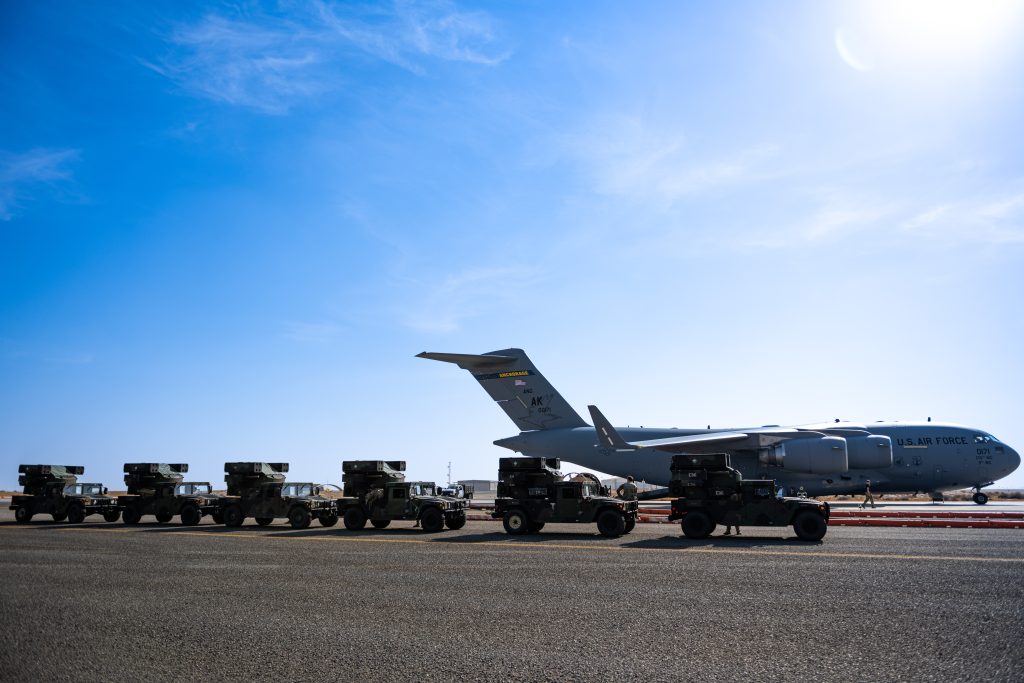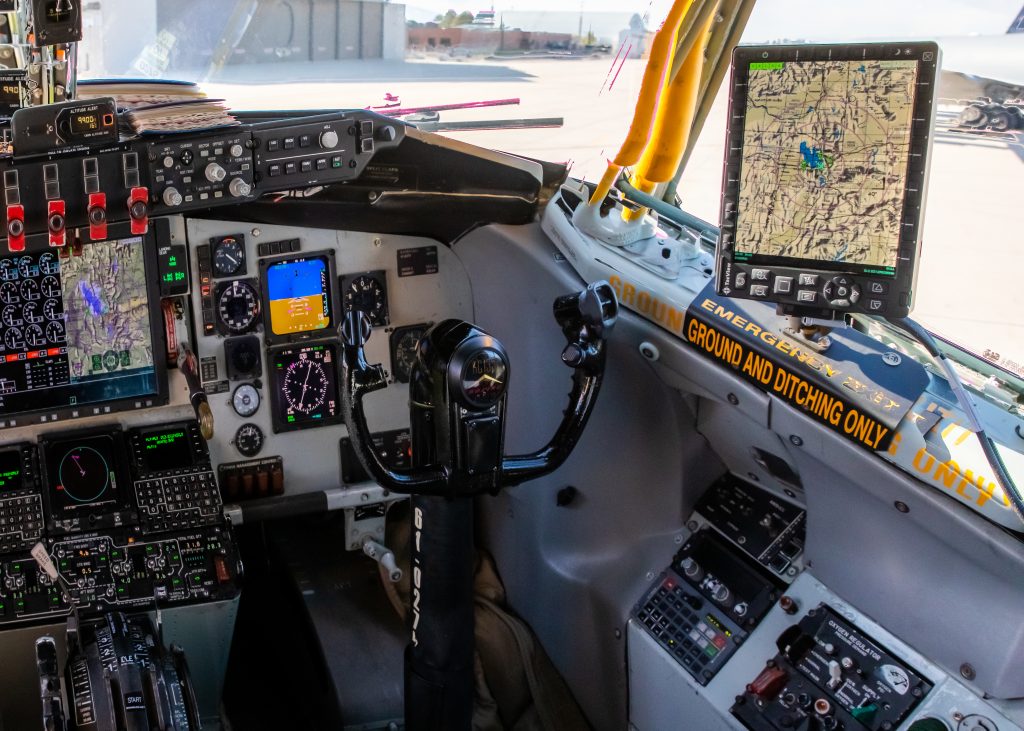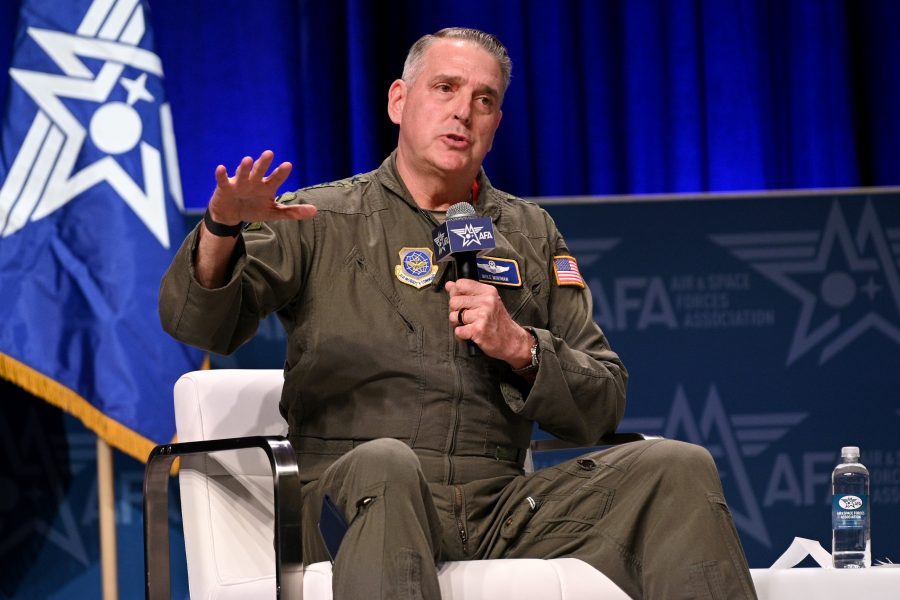AURORA, Colo.—Gen. Mike Minihan has had an eventful tour as head of Air Mobility Command. Taking over in the fall of 2021, soon after over 250 AMC aircraft and 500 crews were pressed into service to evacuate Afghans and others from Kabul as part of Operation Allies Refuge, the former deputy commander of the U.S. Indo-Pacific Command turned his attention to China and the ancient state of America’s cargo and refueling fleet, sometimes making waves with his blunt language.
Now, as he closes out his term, Minihan is laser-focused on the connectivity of his aircraft.
During his first “Mobility Manifesto,” released during the AFA’s Air, Space & Cyber Conference in September 2022, Minihan declared that the U.S. was unprepared to fight and win inside the first island chain, American military jargon for the string of islands closest to mainland China. That has changed, he says.
“I say we absolutely are ready,” Minihan said in a recent interview with Air & Space Forces Magazine at the AFA Warfare Symposium. However, there are caveats, he noted in grading his work.
“Where we were to where we are: an A-plus; where we are to where we need to be: C-minus,” Minihan said.
Air Mobility Command hasn’t been able to take it easy after the evacuation from Afghanistan. A few months later, after Russia invaded Ukraine in February 2022, AMC began transporting millions of dollars worth of military aid to Kyiv. Over the summer, AMC conducted its massive Mobility Guardian 23 exercise. And since Oct. 7, the Air Force has airlifted humanitarian assistance to Gaza and helped beef up the U.S. air defense posture in the Middle East as U.S. troops have come under attack. At one point in early November, AMC had more C-17s tasked globally on a single day than at any point during the Afghanistan evacuation, according to a spokesperson for the command.

“I’ll be the first to admit that those things on the scale of what would happen in the Pacific are fractional,” Minihan said of a potential conflict. “I’m always worried about capacity and reliability.”
The fleet size is only so big, and there is no plan to grow it significantly. So AMC is making the most of what it has, at least while Minihan is still in charge. His major initiative coming out of Mobility Guardian was the so-called 25 by 25 plan—to have 25 percent of the fleet connected by 2025, aimed at tackling the problem of situational awareness for his crews, a key issue highlighted by the exercise and a real-world concern among Airmen.
“The solution right now is we operate the airplane in the same way our grandparents did,” Minihan said. “Those are highly integrated plans, and everybody knows what everybody else is going to do. But it’s not the most efficient use of airpower. And it’s not the type of thing that you can sustain over long lines of communication and have the effects that this nation needs.”
A better-connected fleet—between ground crews, other aircraft, and AMC’s Air Operations Center—will be crucial to integration with the joint force and allies in the future, he said, and serve as a relay and provider of information, something Minihan refers to as “maneuver battle management.”
“I can have situational awareness of where the good guys and the bad guys are,” Minihan said. “I can just look at a tablet or a screen and I can see it. … I can know which airfields have been bombed or damaged. Then I don’t have to just show up, look at the runway, and say that one’s not for me today. These things are all essential. This is what’s getting after this maneuver battle management: how do I do the 1,000 decisions so that I can put the Stryker team in a position where they can go be lethal? You know, how can I do that? Connectivity is the only way.”

The benefits of better connectivity are more efficient operations, which save blood and treasure, Minihan said. And for a cost cost-conscious service, which still operates many planes from the 1950s—such as the KC-135 Stratotanker—an upgraded but still old fleet that plugs into better technology would help bridge the gap between the KC-135 and the troubled KC-46 Pegasus while the USAF waits for the stealthy Next-Generation Aerial Refueling System (NGAS) concept to mature.
“The bottom line is line of sight, beyond line of sight, secure communication in the unclassified and unclassified arena—this is stuff that exists now,” Minihan said. “They have an enormous return on investment for a very modest amount of money. So we’re not talking billions here.”
Minihan routinely reiterates how proud he is of Airmen who find a way to execute their mission even when conditions are not ideal and they have to make decisions on the fly. But the ability of AMC to do its job may mask some of the pitfalls it would face in a near-peer conflict—or in the large-scale exercises the Air Force wants to introduce in the near future.
“I won’t be satisfied until the resourcing follows that understanding,” Minihan said. “I’m not looking for pats on the back here. I’m trying to be a good steward of the mission that this command has been given. It has to be the most relied-upon force in the history of warfare.”

